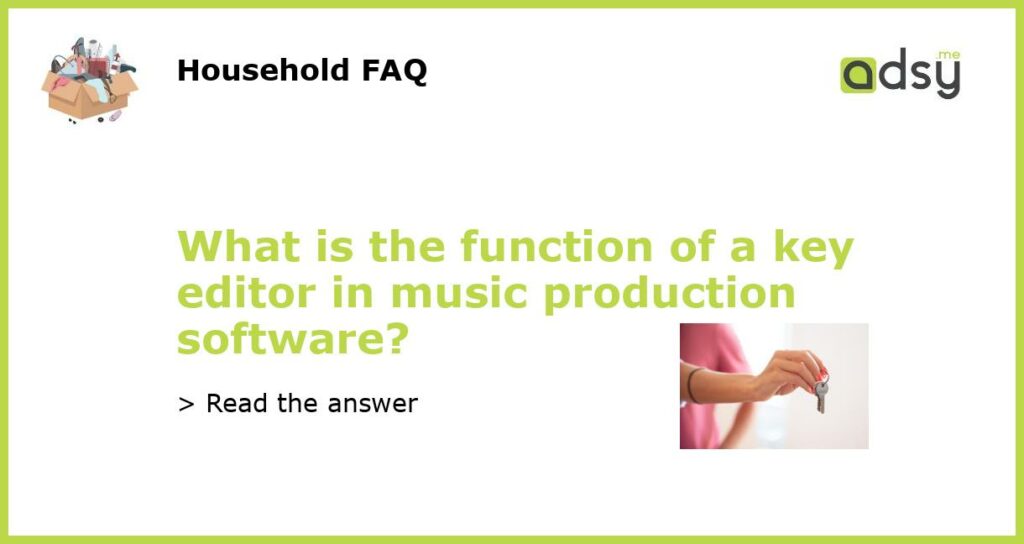Understanding the Function of a Key Editor in Music Production Software
When it comes to music production software, one of the essential tools that producers and musicians rely on is the key editor. This feature plays a crucial role in manipulating and fine-tuning the musical elements within a composition. In this article, we will explore the function of a key editor and how it contributes to the creative process of music production.
Defining a Key Editor
A key editor is a component of music production software that allows users to visually edit and manipulate the pitch, timing, and velocity of individual notes within a musical composition. It provides a graphical representation of the musical elements of a track, with each note represented as a vertical line. By editing these lines, producers can adjust the various aspects of a musical performance to achieve the desired sound.
Adjusting Pitch and Timing
One of the primary functions of a key editor is to give producers the ability to adjust the pitch and timing of individual notes in a composition. This feature is especially useful when working with recorded performances, as it allows for corrective measures to be taken. By accessing the key editor, producers can quantize or correct the timing of notes that may not align perfectly with the desired beat or groove. Similarly, adjustments can be made to the pitch of each note, ensuring that the overall performance sounds in tune.
Manipulating Musical Expression
In addition to correcting pitch and timing, a key editor enables producers to manipulate the musical expression of a composition. This can be done by adjusting the velocity, duration, and articulation of individual notes. By tweaking the velocity, producers can control the intensity and dynamic of a particular note, allowing for a more nuanced and expressive performance. They can also modify the duration of each note, creating staccato or legato effects, depending on the desired musical style. Furthermore, articulation can be altered to add subtle nuances or emphasize certain accents within the composition.
Working with MIDI Data
A key editor is particularly valuable when working with MIDI data, which stands for Musical Instrument Digital Interface. MIDI data contains information about pitch, timing, and other musical elements, allowing musicians and producers to communicate musical ideas effectively. By accessing the key editor, producers can view and edit the MIDI data, making necessary adjustments to produce the desired sound. This grants them a high degree of control over the composition, enabling them to create complex arrangements and intricate musical performances.
Enhancing Creativity and Workflow
Ultimately, the function of a key editor in music production software is to enhance creativity and streamline the workflow of producers and musicians. By offering precise control over various musical parameters, a key editor enables producers to bring their artistic visions to life. It allows for experimentation and exploration, as different musical ideas can easily be tested and modified. Moreover, the key editor speeds up the editing process, as producers can make changes directly within the graphical interface, eliminating the need for manual adjustments.
In conclusion, a key editor is an essential tool in music production software. Its ability to adjust pitch and timing, manipulate musical expression, work with MIDI data, and enhance creativity and workflow make it indispensable for producers and musicians. Whether used for corrective measures or creative experimentation, the key editor plays a vital role in achieving the desired sound and bringing music compositions to life.






